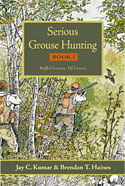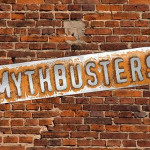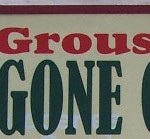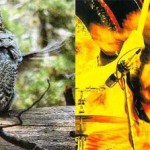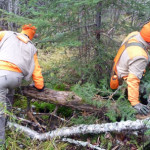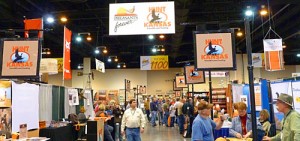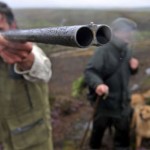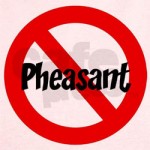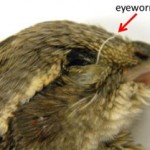Should Forecasts Be Banned: Part 2
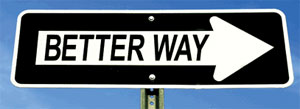 Last week we published the first part of a point by point rationale for why bird forecasts are more bad than good, and should potentially be banned…or changed, per the below. Here’s the second and final part.
Last week we published the first part of a point by point rationale for why bird forecasts are more bad than good, and should potentially be banned…or changed, per the below. Here’s the second and final part.
If we’re missing something here or got our logic wires crossed, make sure you let us know. Also let us know your opinions because this’ll get in front of DNRs and tourism folks.
Quick background on part 1: point 1 is that travel to bird states is affected by bad bird forecasts, and point 2 is that the hunting in major bird states is often still good regardless of the forecast. So on to point 3.
Point 3: Little Effect on the Ground
Let’s use South Dakota as a case study. This year its pheasants are forecast to be down 46%, let’s say about an 800,000-bird drop. Sounds bad – but isn’t.
First of all, it’s a drop from a huge bird year, so that has to be put in perspective.
Second, Anthony Hauck of Pheasants Forever says hunters there should still shoot 1.2 million birds this year – 1.2 million! That’s an amazing number. Any state with that many birds is worth traveling to.
Third, let’s take that 46% – if it’s accurate (see Point 4) – and make it personal. If you’re used to seeing 20 birds a day, now you’ll see 10 or 12. Ten birds a day last year means and it drops to five or six. Two and it drops to one. (That’s if where you hunt really had a population drop because not all areas do.)
Are those numbers really that bad? Is that really a reason for even a fair-weather birdman/woman not to go hunting? Heck no. A bonus is it might make your hunting day longer than it otherwise would be.
Point 4: Forecasts Aren’t 100% Accurate
Yes there’s a methodology to doing bird forecasts and brood counts. But it’s anecdotal. Or even if it’s scientific, it’s not comprehensive. So:
- There’s no possible way to do a completely accurate bird count for an entire state
- So bird forecasts may not be accurate and…
- …they definitely don’t represent bird populations for an entire state (areas or pockets will always be better or worse)
Then why plan your hunt around them?
An exception may be localized areas you know have been hammered by one or more years of bird-unfriendly weather, which might lead to compounded population drops. In that case your choices would be to find the pockets of cover that still hold birds, or hunt elsewhere…in the same state.
Point 5: Bound To Be More Bad Than Good
Since bird populations always go up and down, we can conservatively assume that given 10 consecutive forecasts, at most half of those years will post increases in the bird population. And probably only one or maybe two of those five will represent mouth-watering high numbers of birds.
This means at least half and probably most bird forecasts are negative (post “drops”), which sucks!
Point 6: Vicious Cycle
Last but no way least, Hauck noted that a bad forecast can feed on itself. “The more interest in pheasant hunting, the more interest in improving pheasant habitat. More-improved pheasant habitat helps bird numbers, and then we get to put out a nice, rosy Pheasant Hunting Forecast,” he said.
Another way of putting it:
Bad bird forecast = tourism down = bird spending down = bird political influence down = habitat down = birds down = bad bird forecast, etc.
Solution?
The birds are there and deserve to be hunted. You and Spot deserve to get out and hunt. You deserve to be encouraged in that pursuit by states that have birds to be hunted…in part paid for by your spending there.
But if half or more of bird forecasts are negative, what do we do about that? Sounds like two choices:
1. Convince states not to do a forecast. A “pro” is that this would solve all of the above points. A “con” is that no forecast misses a chance for hunters to get psyched and the bird world to get some pixels in what otherwise is a deer-crazy world.
2. Create a new rating system. Pheasant populations in the top pheasant states are way down this year, but they’re still good – the hunting will be good to great in some or even all historically good pheasant regions. (This also applies to ruffed grouse.) So if, for example, Iowa’s pheasant population is way down but is still better than all but six or seven states, why have the historical low as the only measure?
Maybe someone (*cough* Pheasants Forever *cough*) should establish – hopefully with our help! – a hunt index. Like: great, good, average, not good, poor.
Using that scale, most of the major “down” pheasant states this year will be average or good. That’s better than saying “XX% down,” and is a more-accurate depiction of what the hunting experience will be…which is all us chicken-heads care about anyway.
The End
(For now.)
Category: Forecasts/counts, IA, Pheasants, Pheasants Forever, Rants, Ruffed Grouse, SD





